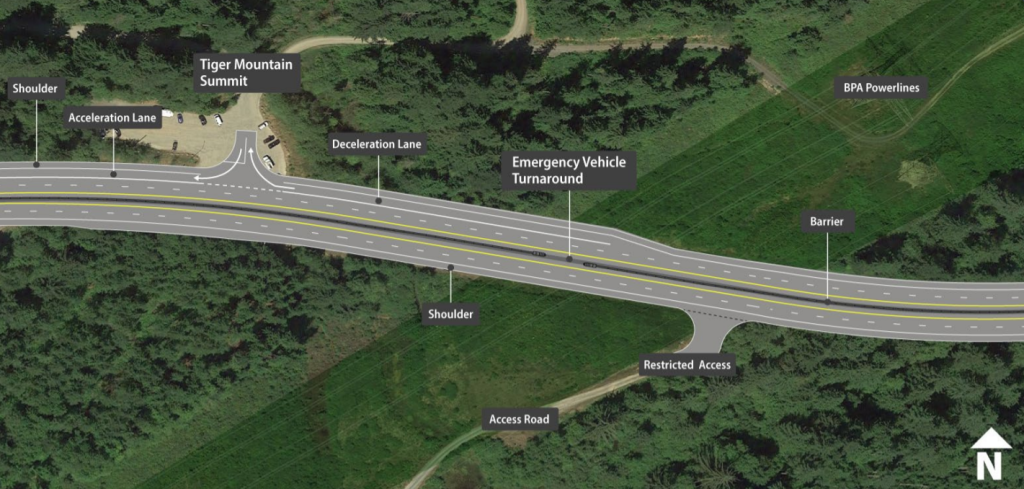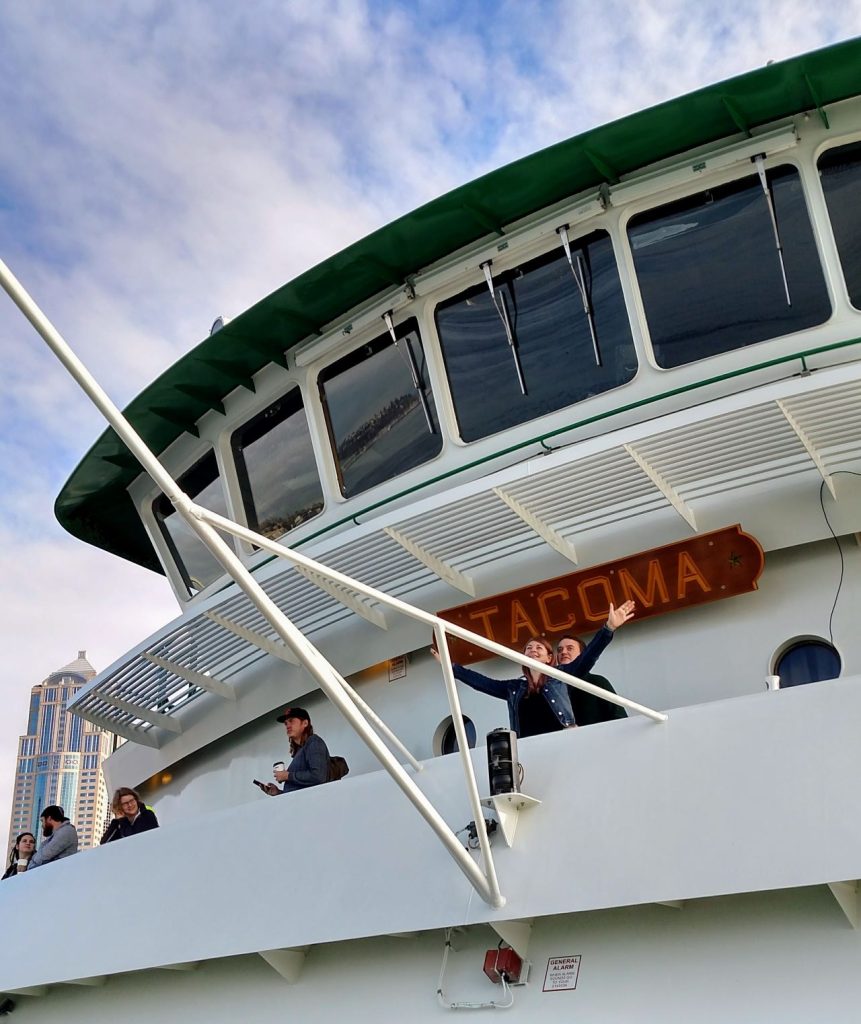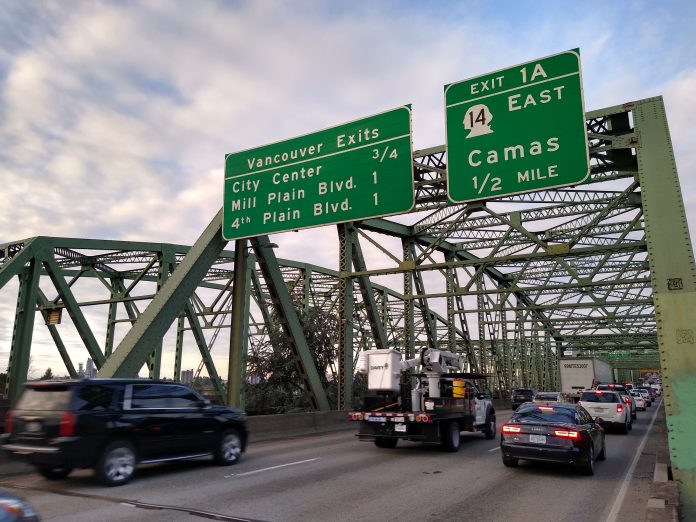
On Tuesday, the Washington State Legislature’s Democratic caucus unveiled a $16 billion proposal funding a suite of transportation projects intended to be completed over the next 16 years, through 2038. The proposal represents both a dramatic shift from the proposals of years past, with a significant increase in the amount of state funding that would be allocated toward transit, walking, and biking investments. The proposal funds fare-free transit for people under 18 years old and high speed rail planning. Still, it’s a package very much tied to previous choices the state has made around transportation, with billions of dollars earmarked for highway expansion projects new and old.
State Sen. Joe Nguyen, who serves on the transportation committee, framed the package as providing huge gains in transportation access in his remarks to The Urbanist. “I feel like this package represents a lot of the values that we had from our community stakeholders…knowing that we had leadership with Sen. Liias and Sen. Saldaña with a clear perspective on what it looks like to have a transformative transportation package, Move Ahead Washington represents that in the best way we can do it.”
The “Move Ahead Washington” package follows years of attempts to pass a new revenue package, most recently during last year’s legislative session. At that time, the House and the Senate proposed competing proposals, which led to a failure to come to consensus before the end of the session. The House proposal was an incredibly ambitious one that included nearly $26 billion in spending, as well as an 18-cent gas tax increase that would have risen automatically with inflation. The Senate proposal included a nearly 10-cent increase in the gas tax, but also imposed taxes on additional items like new home construction. Former Senate Transportation Chair Steve Hobbs brokered the projects in his package through an opaque process that left out many of the most progressive members of the Democratic caucus, while Republicans in the Senate Transportation Committee voted down amendments from those progressive members and then turned around and voted against the bill. These antics earned Hobbs top billing among the zeroes in The Urbanist‘s Heroes and Zeroes recap of the 2021 session; Governor Jay Inslee promoted Hobbs to Secretary of State, opening up his seat as transportation chair.
This year, Democrats have vowed to not increase the gas tax as fuel prices continue to be national story and much of the legislature faces reelection fights in a few months. The latest proposal relies heavily on revenue from Washington’s Climate Commitment Act, which passed last year and is in the process of implementation. Its cap-and-invest program is anticipated to bring in over $5 billion through 2037, which aligns with the 16-year horizon of the transportation plan. All of that money is accounted for in the package, and must be used for projects that reduce transportation emissions.
On the highway project side, the proposal avoids a gas tax increase by relying on revenue from the federal infrastructure law passed last year, anticipating $3.4 billion in federal support, and a one-time supplement from Washington State’s operating fund of $2 billion. That supplement breaks a long-standing norm of not using operating fund revenue to fund transportation, but the idea had been increasingly discussed by both Democrats and Republicans as a way to solve transportation funding issues. It does mean, however, that funds that could be going to schools or housing would mostly go to expanding highway infrastructure, a fact that was noted in a critique of the proposal by Front and Centered, a coalition representing the interests of historically marginalized communities on the frontlines of climate and environmental change.
With a unified proposal coming from both chambers, Democrats are better positioned to pass a package than in any recent year. But they only have 30 days left in the short legislative session to succeed. Move Ahead Washington may not be the transportation package needed to fully meet the state’s adopted targets around reducing emissions from transportation, but it may be the most ambitious package that can pass this year. During our conversation, Nguyen noted that in years past, negotiations over how to modify the transportation package had started on the same day the proposal was released to the public. Here, work to develop a consensus has been underway since the failure to pass a package last year, so the amount of negotiations among Democrats will likely be kept to a minimum.
Transit investments in the plan total $3 billion
Move Ahead Washington would spend over half of the anticipated transportation revenues from the Climate Commitment Act on public transportation investments, the largest increase in state support for public transit in decades, if not ever. Approximately half of those public transit investments will come in the form of Transit Support Grants. On a per year basis, the $1.45 billion over 16 years should work out to approximately $90 million per year. Generally speaking, state support for the operating budgets at all 32 transit agencies in Washington has ranged from $70 million to $120 million in recent years. In other words, these grants could represent a doubling of state support to running buses and trains in Washington State.
The state is putting one big condition on this unprecedented allocation of funding: to receive the grants, agencies have to make transit fare-free to all riders under the age of 18. This is an interesting step given the nationwide conversation around making public transit as a whole fare-free. It’s also an easy-to-understand selling point by making public transit easy to use for families with kids and for older kids trying to get to school in an age of school bus driver shortages.
“Being able to ensure that anybody under the age of 18 has access to transit, I thought was important,” Nguyen said. “I want young people to use our systems… I want to build a culture of public transit so we don’t just have another generation of folks who are just like ‘what kind of car should I get?'” he said.
It remains to be seen how those grants would be allocated. In 2019, two-thirds of all passenger trips on public transit happened on King County Metro’s services. If grants are allocated based on the share of ridership, the grant program would be reinforcing existing inequalities in transit service across the state, replaying the way that federal coronavirus relief was allocated. It’s clear that there will have to be a different way to determine how much funding goes to each agency, but we’ll have to wait for details to be finalized as there are currently none to be found in the spending bill. Nguyen said those details will be worked out in the coming month but that equity considerations would be top of mind.
There are many other transit grants in the package as well: $600 million for special needs transit grants, $400 million to upgrade buses and bus facilities, $200 in green transit grants, $80 million for tribal transit grants, and $25 million for trip reduction programs.
The plan also includes $238 million in earmarked transit investments, paying for specific corridor and bus electrification projects across the state. Here are some of the projects included that impact Central Puget Sound:
- $30 million for three Community Transit Swift line expansions: the Silver Line, the Gold Line, and an extension of the existing Green Line;
- $8 million for King County Metro’s RapidRide I Line project, specifically for the segment in Auburn;
- $7 million for upgrades to King County Metro’s RapidRide H Line project in Burien along Ambaum Boulevard; and
- $5 million for electrification at King County Metro’s South Base.
Also included is $60 million for transit “access improvements” near soon-to-open light rail stations along the Tacoma Dome and Lynnwood Link extension projects. These vaguely described projects may come with a road expansion component and will warrant further scrutiny.
$150 million to advance high-speed rail investments
The proposal also includes an allocation of $150 million to move forward the concept for a high-speed rail network in Washington. This won’t be enough to fund construction, but will move the concept into a project development phase, which will likely include public engagement, additional scoping, and environmental review. State funding could make a Cascadia high-speed rail corridor competitive for federal funding or even attract private investment, with companies like Microsoft fully on board with the project.
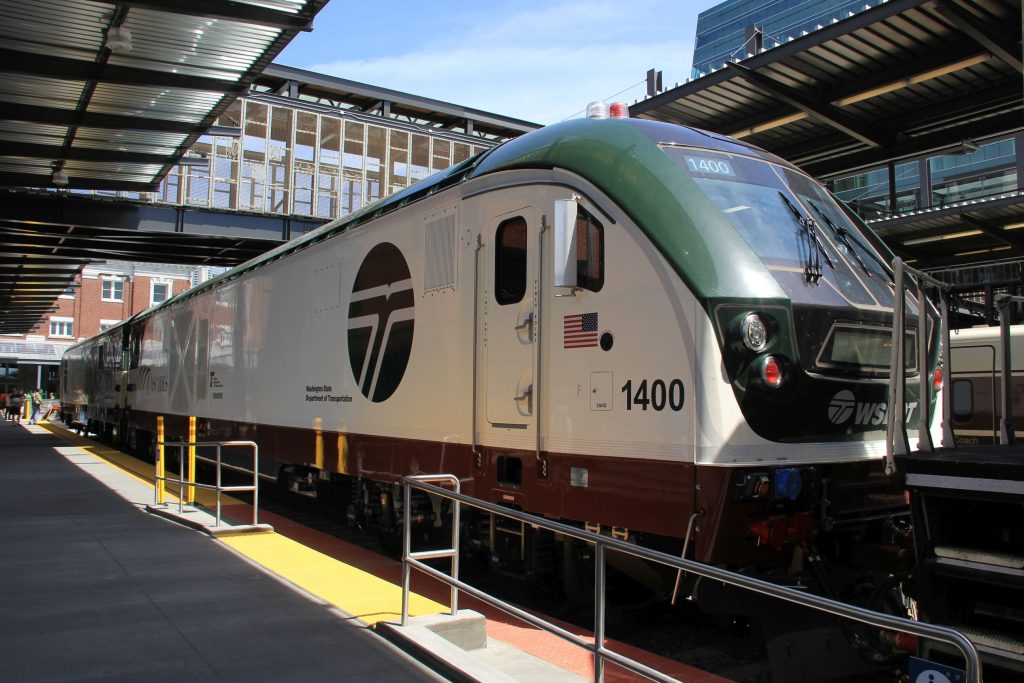
Active Transportation investments total nearly $1.3 billion
Move Ahead Washington includes much more money to improve transportation infrastructure for people who get around by walking and rolling than has ever been included in a transportation package in Washington. Most of this funding will come in the form of grants, significantly expanding existing sources of funding handed out by the Washington State Department of Transportation (WSDOT) to cities, counties, and tribes. For example, the proposed $568 million in Safe Routes to School and Bicycle and Pedestrian grants over 16 years would translate to around $70 million for every biennial state budget. By comparison, in the current biennium, the legislature had allocated $47.5 million, and that was after a special allocation. Since 2005, the legislature has handed out only $251 million through those grant programs, so the amount would double in this proposal.
Also included is $146 million in grants for cities to remake existing streets to create space for people to walk and roll via Complete Streets investments.
$50 million would go to Connecting Communities grants, a program Sen. Nguyen tried to get into the package last year and failed, despite the relatively modest sum requested. Nguyen described this grant program as intending to provide additional infrastructure in neighborhoods that haven’t been heavily invested in historically, giving people new ways to connect to transit and improving bicycle and pedestrian infrastructure.
There’s also $278 million for a school-based bike program to provide free bikes to students at public schools across the state, with a focus on schools in underserved communities. It would also provide cycling education at those schools.
An additional $292 million investment in bicycle and pedestrian projects is explicitly called out in the proposal. The single biggest investment on the list is a $50 million allocation toward changes on Aurora Avenue N through Seattle, which has been the city’s most deadly road in recent years. Sen. Reuven Carlyle, whose 36th Legislative District includes Aurora Avenue, has been touting an “urbanist vision” for the crash-prone thoroughfare which includes safe space for people to bike in addition to increased housing density along a slimmed-down vehicle corridor. While it will likely be the City of Seattle that needs to take the lead to ensure that vision becomes a reality, getting a $50 million allocation here will be a pivotal first step. The Urbanist and the rest of the Move All Seattle Sustainably (MASS) Coalition advocated for this investment.
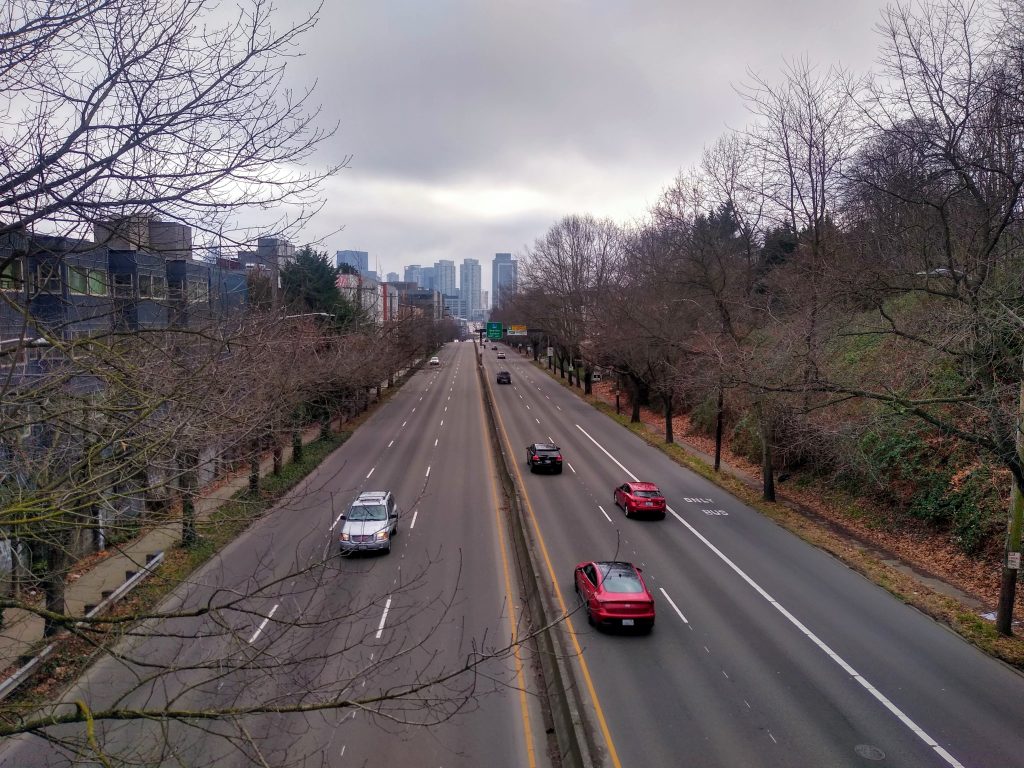
Other investments in active transportation include $24 million for Eastrail, $2 million to improve the Interurban Trail, and $22.5 million for improvements to an additional segment of SR-99 in Edmonds and Lynnwood.
The proposed Aurora Avenue investment is a huge exception to the fact that the transportation package doesn’t appear to heavily invest in repairing the damage caused by state highways running through population centers. Lack of speed reduction treatments, on and offramp mitigation, and missing pedestrian and bicycle facilities are all urgently needed to make the existing state highway system accessible and safe for people not in cars. The state has 542 miles of state highways through population centers lacking pedestrian facilities: if a transportation package doesn’t fund improvements, they won’t happen.
Highway expansion projects to receive $4 billion
“Every dollar we spend has to be reducing emissions,” Senate Transportation Chair Marko Liias said on Tuesday during a live event touting the plan. Unfortunately, his words don’t ring exactly true since the proposal would invest considerably in major highway expansion projects around the state, both new and old. While it wouldn’t spend as much on capacity-expanding projects as Sen. Hobbs’ proposals from years past, that’s not a very high bar to clear.
The single largest expenditure in the plan is a $1 billion allocation to the “Interstate Bridge Replacement” project, which will expand I-5 along a five mile stretch on either side of the Oregon and Washington border. The replacement of the aging bridge structure over the Columbia River is only one aspect of the project, which also includes five interchanges and expansion of the highway to ten lanes in the project area. The project team has explicitly made a choice to de-center climate and equity impacts from the project, instead recycling concepts from the failed Columbia River Crossing project ten years ago in order to keep the project on track to start construction in 2025. Prominent voices in the Portland region, like Metro Councilmember Mary Nolan, are calling for the project to explicitly align with the emissions reductions that have been adopted by both Washington and Oregon, but so far there are no indications that such a commitment will be made.
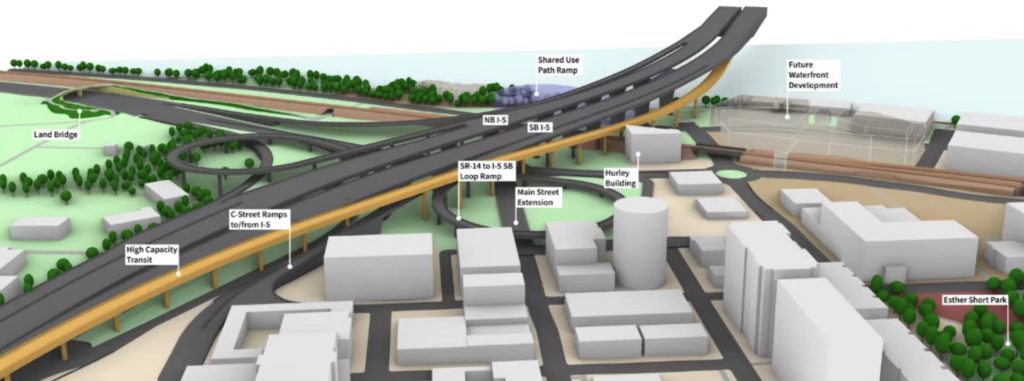
Additionally, $640 million is also allocated toward the expansion of SR-18 near Tiger Mountain State Park. This project, located in State Sen. Mark Mullet’s 5th district, follows a $190 million project to expand the interchange of SR-18 and I-90 and widen the highway; the funding in Move Ahead Washington would finish the job and widen the highway down to Issaquah-Hobart Road. Mullet has long advocated for SR-18 to be widened. Mullet narrowly survived a progressive challenge to hold onto his seat in 2020.
Widening SR-18 has been framed as a badly needed safety improvement, but it’s absolutely not clear that widening the road to four lanes is what is needed to make it safer; the widening is clearly intended to do more to relieve congestion near the Tiger Mountain Summit and jam more cars into the area.
The package also backfills a number of projects from the 2015 Connecting Washington package that are now over budget. $406 million would fill the funding gap on the SR-520 replacement project, including the new Portage Bay Bridge and the second planned highway lid at Roanoke Street. It would not pay for a second bascule bridge over the Montlake Cut, which we can likely say is now a dead concept. The remaining parts of the 520 project do include some transformative bike and pedestrian projects, like an extension of the multi-use path to Capitol Hill, a proposal not previously included.
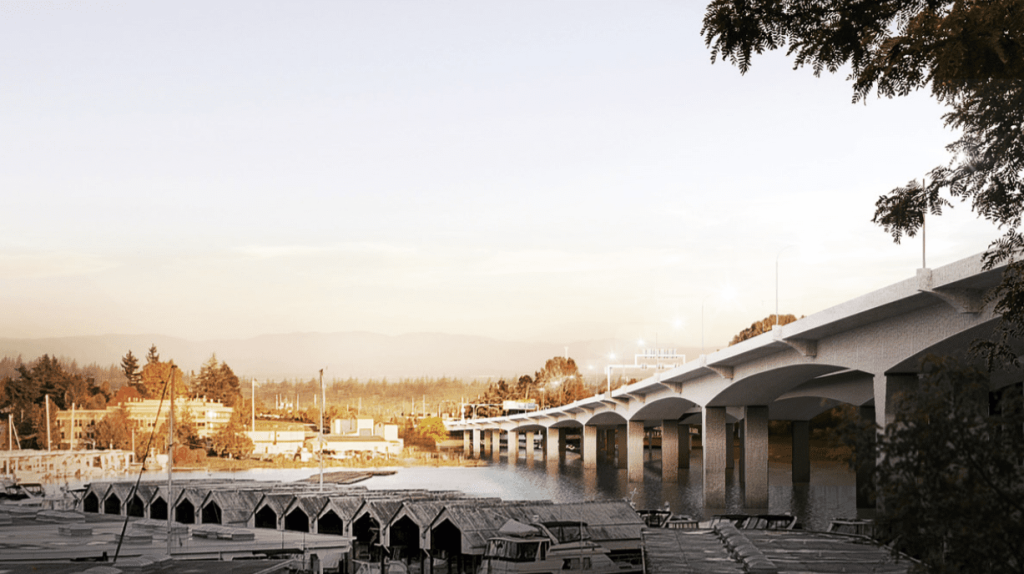
It also allocates $380 million to the I-405 expansion projects, which are moving forward in conjunction with Sound Transit funding to provide transit service via the HOV lanes along that corridor. $434 million would also complete the funding gap on the so-called Puget Sound Gateway projects, the extensions of SR-167 and SR-509, and $155 million would fill in a funding gap on the widening of I-90 through Snoqualmie Pass.
There is a laundry list of other highway projects that would be paid for, including $244 million for additional HOV lanes on I-5 at Joint Base Lewis-McChord, over $100 million to widen SR-3, $210 million to expand the US-2 trestle bridge, and $10 million to widen SR-522. Despite affirmations of the need to reduce statewide carbon emission, the question of whether these projects are in line with the state’s climate commitments just isn’t really on the table.
Highway maintenance and preservation to see $3 billion allocation, fish barrier removal $2.4 billion
After allocating $4 billion to expansion projects, the package makes a substantial down payment on the maintenance and preservation backlog of the state transportation system. WSDOT estimates that the current funding shortfall to keep the state highway system in a state of good repair is $475 million per year, so the $3 billion allocated here should be able to fill that gap for around six years, not the 16 years the package is intended to span.
The $2.4 billion for fish passage barrier removal should get the department closer to its federally mandated goal. WSDOT Secretary Roger Millar told a highway interest group back in December that WSDOT needed approximately $375 million per year to fulfill its obligations regarding fish passage: the department has around 400 culverts to remove by 2030 in order to comply with a federal injunction. Culverts get removed in some of the other highway projects as well, and it remains to be seen whether this will truly get the department over the finish line.
Ferry investments total $1.5 billion
In order to maintain the state’s aging ferry fleet, Roger Millar has noted that the agency needs to add one new ferry boat every year for the next decade: so far they’ve only been able to add two new boats in four years. The Move Ahead Washington package would build four new boats, getting WSDOT considerably closer to what is needed, though likely not all the way there. It would also provide $193 million for electrification upgrades to existing boats and terminals.
A transformative transportation package
Ultimately, the proposed transportation package represents an acknowledgement that Washington State needs to approach transportation investments much differently than it has for few decades. While the shift is not just a reflection of new leadership in the Senate Transportation Committee, Sen. Marko Liias is clearly interested in pushing hard for change. There’s a lot of transformative projects included here, notably the pivotal move to provide additional transit operating dollars, something that the state has shirked away from for the past two decades. This has led to accolades from advocacy organizations such as the Transportation Choices Coalition (TCC) and Washington Bikes. Other advocates like Front and Centered, which is leading the call for a Just Transition in Transportation, have been more circumspective in their praise, but still shared they are “pleased to see a very different approach this time around” in a press release.
Like any transportation package trying to serve 7.7 million Washingtonians, there are elements many people will wish were better. Ultimately, however, this proposal is a giant leap forward in how the state legislature sees its role in providing access and mobility for all.
Ryan Packer lives in the Summit Slope neighborhood of Capitol Hill and has been writing for the The Urbanist since 2015. They report on multimodal transportation issues, #VisionZero, preservation, and local politics. They believe in using Seattle's history to help attain the vibrant, diverse city that we all wish to inhabit. Ryan's writing has appeared in Capitol Hill Seattle Blog, Bike Portland, and Seattle Bike Blog, where they also did a four-month stint as temporary editor.


